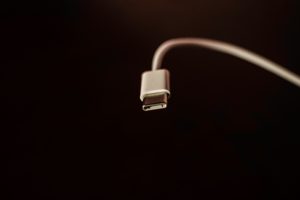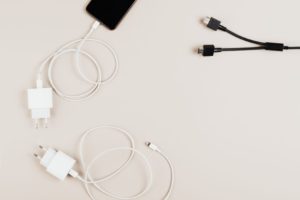 You’ve probably heard the news by now that the EU is mandating a single universal charging standard on most electronic devices. The chosen charging technology is USB Type C for obvious reasons, like the fact that there’s currently no better charging technology on the market. The law was adopted in October of 2022 and will go into full effect for most electronic devices by 2024 and for laptops by 2026.
You’ve probably heard the news by now that the EU is mandating a single universal charging standard on most electronic devices. The chosen charging technology is USB Type C for obvious reasons, like the fact that there’s currently no better charging technology on the market. The law was adopted in October of 2022 and will go into full effect for most electronic devices by 2024 and for laptops by 2026.
So what does this mean for you and me? What impact will it have on our everyday lives?
Impact Of The Universal Charging Law
By year 2024, devices that don’t rely on USB-C to charge will not be allowed to be sold in the EU, unless they were produced before the law came into effect. That means that in the next year, all your electronics will use USB-C, ending the need for people to have multiple chargers. Now one can do it all.
Under the new laws, fast charging speeds will be standardized. In other words, devices that support fast charging will have the same charging speed. Also, there’s a chance that cables will be removed from new phone boxes to stop consumers from getting chargers they most likely already have, thereby reducing e-waste and saving raw materials from being used unnecessarily. From the look of things, this will be optional. So you’d have the option of getting a phone box with or without a charger.
And don’t think that because you don’t live in the EU, this law won’t affect you. It will impact those outside of the EU just as much, because:
- It doesn’t make sense financially for companies to have two separate product lines just because of different charging technologies. So, companies will most likely adopt this in all regions, not just the EU.
- The rest of the world will follow suit with similar legislation. In fact, the US Congress has already hinted at passing the same law. And that’s probably the first of many.
Devices Affected by the Law
- Mobile phones
- Tablets and e-readers
- Digital cameras
- Handheld video game consoles
- Headphones, earbuds, and portable loudspeakers
- Wireless mice and keyboards
- Portable navigation systems
Lastly, as said before, all laptops will fall under the mandate by 2026. This is because laptops consume more battery, so manufacturers need more time to adjust.
Pros And Cons Of The Common Charger Law
Pros:
E-Waste
Chargers currently amount to over 11,000 metric tons of e-waste every year. The new law will effectively help reduce the number of chargers needed in a single home, as one charger works for all. It’ll also help consumers save money and time.
Conserving Resources
Resources used to make other charging technologies will no longer be needed, thereby saving them. Also, due to the fact that most people already have a USB-C charger, there won’t be as much demand to produce USB-C chargers as before.
Uniformity
Possibly the best pro, less cords, less clutter! Now all your devices won’t need different chargers, as your USB C charger can charge all your devices.
Cons
E-Waste
The main goal of the EU in passing this is to reduce e-waste. But this law might just be doing the opposite. For example, iPhones currently use Lightning to charge, so there are lots of lightning cables in use right now. As a result of the new law, the next generation of iPhones will include USB-C ports. Current iPhone users who upgrade are most likely to throw out their lightning cables as they no longer have any use. As a result, e-waste increases.
The good news is, this can be offset by extending the life cycle of your out of date devices by selling them to a smartphone resale store like SmartphonesPLUS. Keeping older generations of iPhones in the hands of consumers keeps the old charging cables out of the landfill.
Did We Really Need it?
Sure, standardizing everything is good, but was it really needed in this situation? Most of the world has already moved to USB-C; even budget phones now come with USB-C. Except for the iPhone, Apple had already adopted USB-C for all of its devices. So, did we really need this? Especially considering all of the e-waste doomed lightning cables and our next point, slowing down innovation.
Slowing Down Innovation
With USB-C now being made mandatory on electronic devices, it’ll bottleneck future wired charging innovation because companies cannot adopt the charging technology, even if it is better than USB-C. As a result, mass or public release or testing is impossible. If the EU recognizes it and wants to adopt that technology, it’ll take at least another few years, considering the recently passed USB-C law has been in talks since 2014.
Is USB-C Really the Best?
What distinguishes USB-C from the plethora of other charging standards available? Let’s take a look at how USB-C fares when compared to its main counterpart, Apple Lightning.
USB-C vs. Apple Lightning
| USB-C | Apple Lightning | |
| Power Delivery | Supports up to 240W fast charging | 12W/2.4A native power support
20W or higher fast charging with USB-C to lightning cable. |
| Durability | Has a chance of outlasting Lightning | Tighter physical connection than USB-C |
| Compatibility | Supported by most modern devices. Soon to be universal. | Supported on Apple devices only |
| Data Transfer Speeds | Up to 40 Gbps transfer speed | Up to 480 Mbps transfer speed |
From the table it’s clear that USB-C is the superior cable and charging technology.
Overall, we do see that regardless of the pros and cons of this change, it is coming in the near future and is something that will impact us when using our everyday technology.







